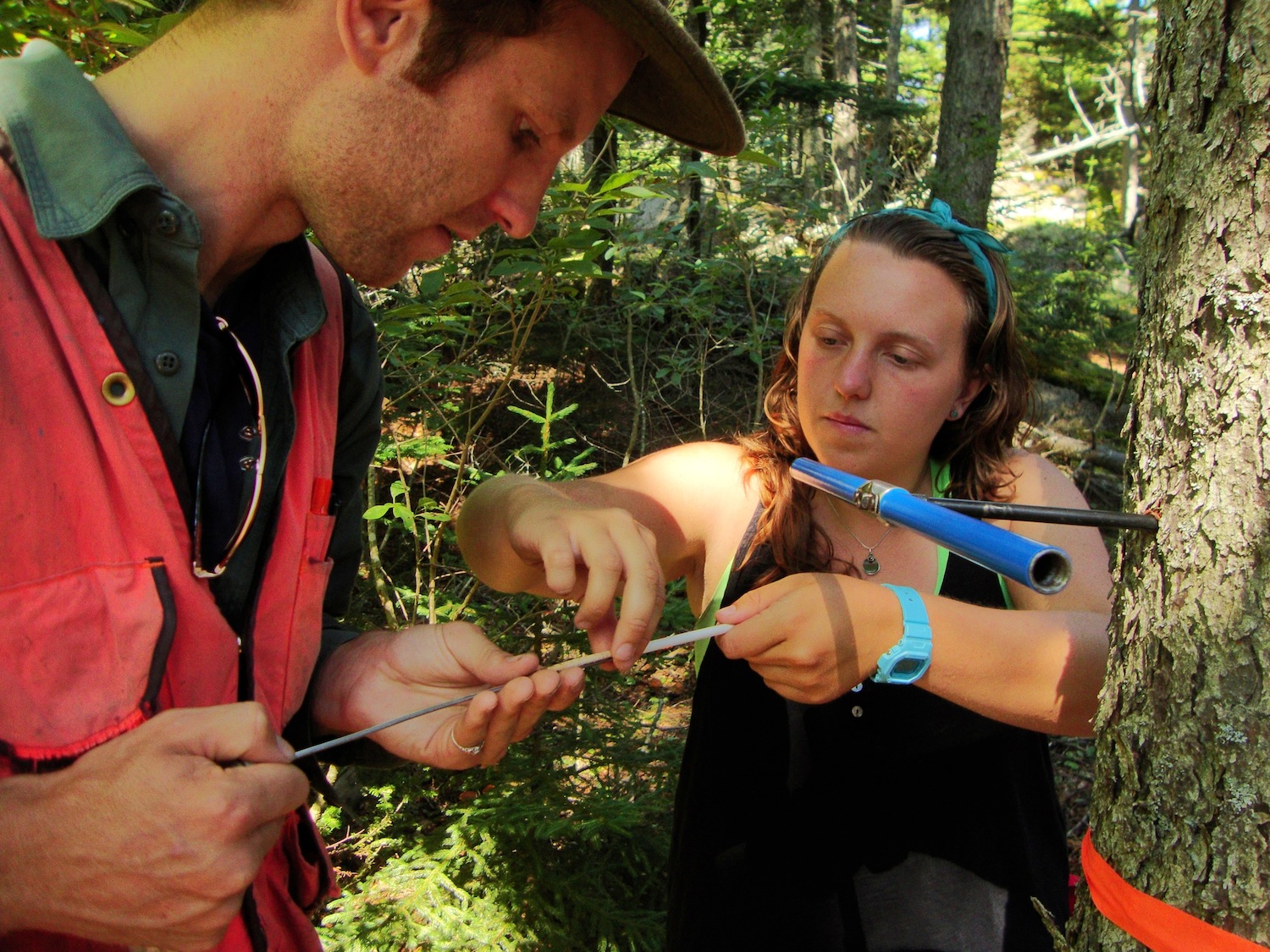new needle growth, and immature female seed cones on a white spruce bough
Male pollen cones from a white spruce
Immature female seed cones on a white spruce
pollen sometimes blows out onto the ocean
While I was working in the lab on Hurricane this past week, I spied a beautiful little Northern Parula (Setophaga americana) foraging and darting in between the bough's of a nearby White Spruce (Picea glauca) tree. Every time the warbler emerged, it was followed by a cloud of yellow pollen. While many of the flowering plants (angiosperms) on Hurricane Island have yet to bloom, this is the season where conifers or evergreens (gymnosperms) are releasing pollen, and dusting everything in sight.
Hurricane Island has three conifers that dominate the landscape: red spruce, white spruce, and balsam fir. At first glance, all of these evergreens might be hard to tell apart. I always remember the difference with the following mnemonic: the "sharp, square, spruce" and the "flat, friendly, fir." Spruce tree needles are square and can be rolled across the palm of your hand, but fir needles have just two sides. Spruce needles are also shorter and tend to grow forward from the stem rather than perpendicular to the stem like balsam fir, which means that if you give a spruce tree a handshake it feels a lot more prickly or sharp. The other major difference between spruce and fir trees is that spruce cones grow up from the branches and fir cones grow down from the branches.
But back to the pollen. For a very short period of time, the evergreens on Hurricane form a different cone in addition to the large, scaly, female seed cones that you are probably familiar with. Male pollen cones are much smaller (just about 1/2 inch long), and last for just a few days. Their purpose is to release pollen and fertilize the female seed cones before they fall off the tree.
Along with releasing pollen, Hurricane's evergreens are also in the process of developing new needles which form on the tips of each branch and stay a lighter green color well into summer. After this flurry of activity in the spring, the conifers will not be changing much except for the newly fertilized female seed cones. These will continue to grow and develop for several years before releasing the seeds.
One part of the research that we do on Hurricane is to monitor the phenology, or timing, of life cycle events in the plants and birds on the island. We use Nature's Notebook to record data on when events like new needle growth and the presence of pollen cones happen to the conifers on the island so that we can compare the timing of these events to other parts of Maine or the US. Other scientists can also create scientific models from these data to predict the impacts of climate change on the timing of when these events happen, which can also help us understand other things like changes in Maine's growing season.
Take a look around you at your home! Notice any new things blooming or growing? Have the conifers already released their pollen?



